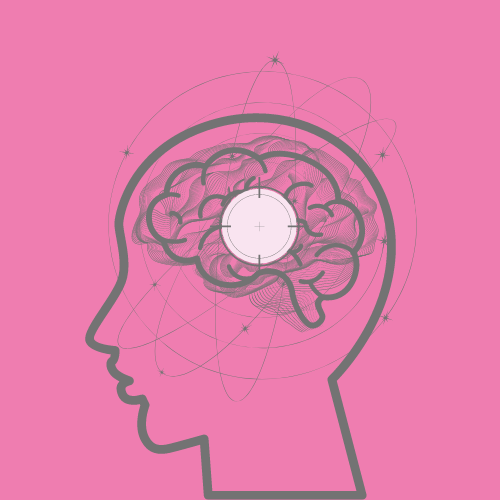Brainspotting (BSP) is a transformative therapy treatment, that focuses on identifying, processing, and releasing core neurophysiological sources of emotional or body pain, trauma, dissociation, and a variety of challenging symptoms.
It was founded and developed from 2003 by David Grand, Ph.D. Dr. Grand’s expertise lies in understanding the brain-body connection and the role of neurobiology in healing he is a performance coach and humanitarian.
Brainspotting is different from other psychotherapies and healing modalities in a variety of ways. It strategically utilises enhanced relational attunement and the client’s visual field to access their brain’s self-scanning and self-healing capabilities.
BSP therapy is based largely on modified methods from other therapies:
- Somatic Experiencing (SE)
- Eye movement desensitization and reprocessing (EMDR)
- Acupuncture (but without needles)
What is the difference between Brainspotting and NLP?
NLP is very valuable and successful, but with brainspotting, it is different – each person has their own map, and this is a no-assumptions model.
Brainspot
A “Brainspot” refers to a specific eye position that is targeted during the therapeutic process. Brainspots are identified based on subtle eye movements, known as “oculomotor reflexes,” which indicate areas of heightened brain activity related to unresolved trauma or emotional distress.
By focusing on these Brainspots, individuals can access and process deep-seated emotions, memories, and sensations associated with their traumatic experiences.
Brainspotting leverages the brain’s natural healing abilities by engaging specific neural pathways through visual stimulation.
Key factors of Brainspotting:
Neurobiological Engagement: Brainspotting engages the brain’s limbic system, which is involved in emotional regulation and memory processing. By focusing attention on specific Brainspots, Brainspotting activates neural networks associated with unresolved trauma or emotional distress. This activation facilitates the release, reprocessing, and integration of emotional material at a neurobiological level, leading to emotional healing and resolution.
Accessing Unconscious Material: Brainspotting enables access to deep-seated emotions, memories, and beliefs that may be stored in the subconscious or unconscious mind. By targeting specific eye positions, Brainspotting bypasses the limitations of verbal communication and allows individuals to connect with and process material that may be difficult to access through traditional talk therapy alone.
Nonverbal and Experiential Approach: Brainspotting acknowledges the importance of nonverbal and experiential processing in healing. By accessing emotions and sensations stored in the body, Brainspotting offers a holistic approach that complements traditional talk therapy. This approach can be particularly beneficial for individuals who struggle with expressing their emotions verbally.
Client Therapist Alliance and Empowerment: Brainspotting facilitates a supportive and nonjudgmental presence for the client which creates a safe space for exploration and processing, fostering trust and empowerment in the client’s healing journey. This enhances the therapeutic relationship and alliance between the client and the therapist play a significant role in the effectiveness of Brainspotting.
Client-Centered Process: Brainspotting promotes autonomy and self-discovery, honouring the client’s autonomy and self-discovery. This creates a client-led process, where the therapist follows the client’s inner experience and pace.
What can Brainspotting Treat?
Brainspotting can be effective in treating a wide range of psychological and emotional issues. While individual experiences may vary, Brainspotting has shown promise in addressing the following concerns:
Trauma: Well-suited for trauma processing and healing. It can help individuals process and release the emotional impact of various types of trauma, such as childhood abuse, accidents, natural disasters, or combat-related experiences.
Anxiety and Phobias: Can assist in alleviating anxiety disorders, including generalized anxiety disorder, social anxiety, panic disorder, and specific phobias. It helps individuals identify and process the underlying fears and triggers contributing to their anxiety.
Depression: Can be beneficial for individuals experiencing depression by facilitating the release of underlying emotional pain and promoting a sense of emotional resilience and empowerment.
Addiction and Substance Abuse: Can complement addiction treatment by addressing the underlying emotional issues and trauma that may contribute to addictive behaviours. It aids in resolving cravings, reducing triggers, and supporting relapse prevention.
Performance Anxiety: Can help individuals overcome performance anxiety in various domains, such as sports, public speaking, artistic performances, or academic pursuits. It assists in accessing and processing the underlying fears and self-limiting beliefs that hinder performance.
ADD/ADHD: Works deep into the subcortex which interfaces with the central nervous system. Through this access point, the client can work into the deeper causes that influence their impulsivity, inattention or hyperactivity. Brainspotting appreciates, but seeks to work beyond, oversimplified diagnostic terms to meet the person’s individual presentation which is always as unique as a fingerprint.
Grief and Loss: Can support individuals in navigating the grieving process and healing from the emotional pain associated with loss. It allows for the release of suppressed emotions and facilitates the integration of the loss into one’s life.
Self-Esteem and Personal Growth: Can promote personal growth and enhance self-esteem by helping individuals uncover and process self-limiting beliefs, past traumas, and emotional blocks that hinder their development and self-worth.
Stress Management: Techniques can be effective in managing stress and promoting relaxation. It helps individuals identify and process the underlying sources of stress and develop healthier coping mechanisms.



